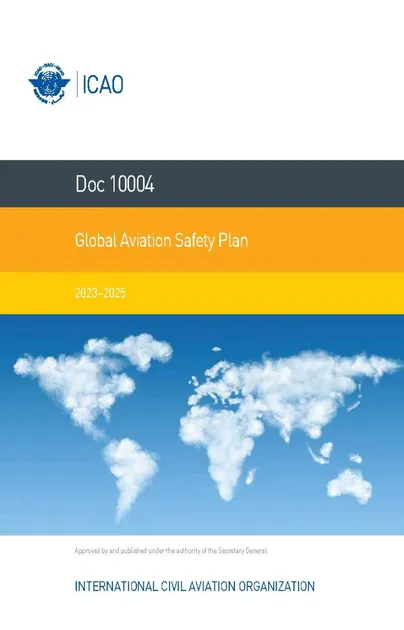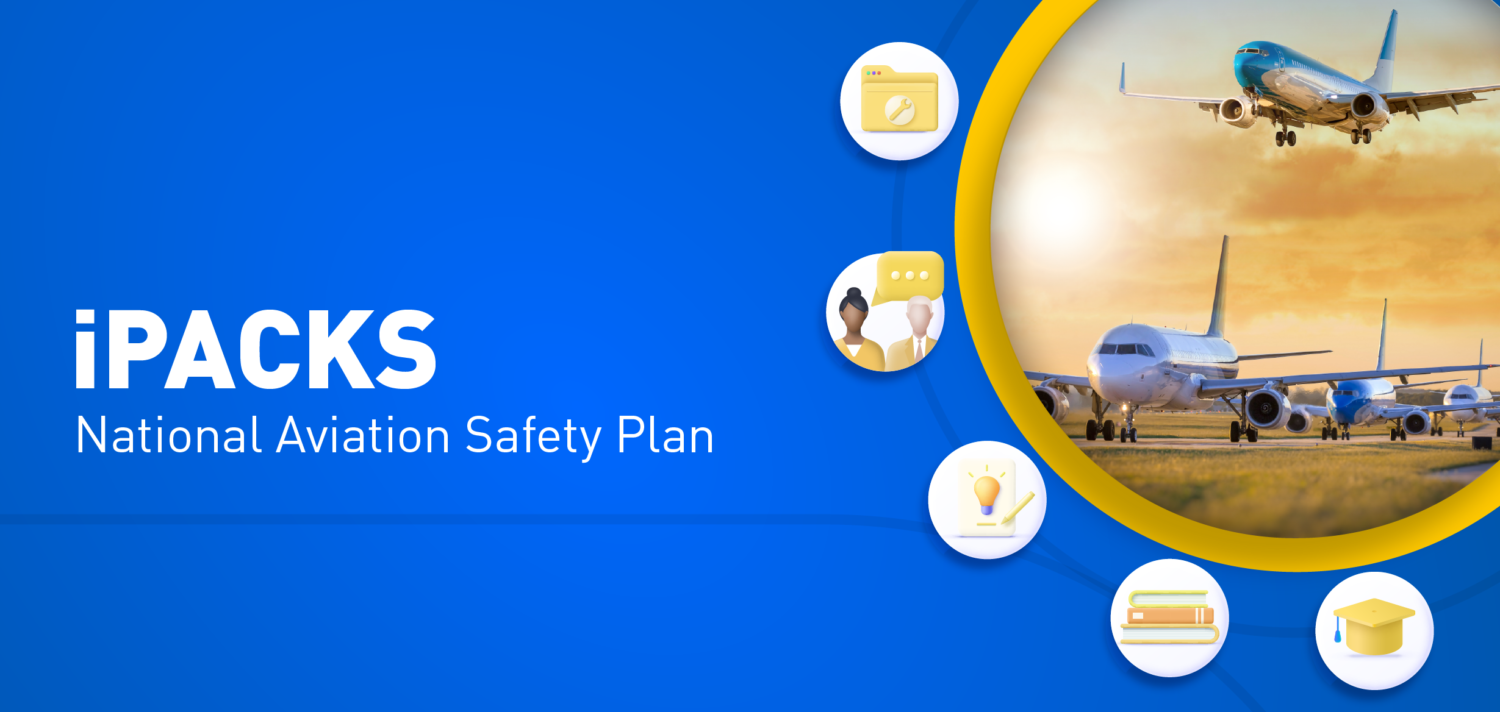At ICAO, we prioritize the importance of safety in aviation’s dynamic landscape. To support Member States and the industry, ICAO developed the Global Aviation Safety Plan (GASP), the comprehensive strategy that serves as our roadmap for ensuring the safety of all air travelers. As aviation continues to expand, diversify, and adapt to new challenges, it’s imperative that we provide adaptable and targeted safety measures. GASP paved the way for two vital frameworks, the Regional Aviation Safety Plan (RASP) and the National Aviation Safety Plan (NASP).
These strategic plans aim to elevate safety management practices at national and regional levels through transparency, collaboration, and improved safety outcomes across the aviation industry. The GASP (ICAO Doc 10004) establishes a global strategy for improving aviation safety. It presents global goals, targets, and global high-risk categories of occurrences (G-HRCs). However, given the diversity of aviation environments and operational risks across regions, the content requires adapting to address national and regional issues.
The RASP ensures that the GASP remains relevant and effective in specific regional contexts. A RASP defines the strategic direction for aviation safety management within a specific region over a set period. The development process should include consultation with States, industry, and other stakeholders. It pinpoints where stakeholders and regional entities responsible for aviation safety management should focus their resources on the upcoming years.
Incorporating the principles of the GASP, the RASP maintains alignment with global objectives while acknowledging diverse safety concerns, priorities, and operational circumstances of each region. The RASP integrates safety enhancement initiatives (SEIs) to address the unique issues of States and associated industries. These SEIs are based on the region’s risk assessment and their need to address specific operational safety risks and organizational challenges.
A RASP allows the region to communicate its strategy for improving safety at the regional level to all stakeholders. It provides a transparent means to disclose how States and other entities involved in civil aviation work to identify hazards and manage operational safety risks and organizational challenges. It allows more efficient use of resources and more effective safety risk management by defining regional safety risk mitigations, as opposed to having each State develop mitigation strategies on its own.
Since the plan contains information on safety performance measurement, it can also demonstrate the positive impact of investments addressing existing SEIs that have been successful or as justification for acquiring additional resources to address ongoing or future safety issues.
National Aviation Safety Plan
Complementing the RASP, NASP addresses the management of aviation safety at the national level. It presents the national safety goals and targets, the operational safety risks, organizational challenges, and SEIs with specific actions to address them. To develop the NASP, States should draw upon the GASP and relevant RASP to ensure alignment with global and regional safety priorities.
While consulting the latest GASP and RASP edition is advised, the NASP should not solely rely on them. The NASP should include SEIs based on the State’s self-assessment to identify national challenges and priorities in aviation safety. Developing the NASP should involve consulting the industry and stakeholders, as necessary.
Since the NASP contains information on safety performance measurement, it can demonstrate the positive impact of investments in existing SEIs that have been successful or to justify the need for additional resources to address ongoing or future safety issues. It supports State safety programme (SSP) implementation and documents an effective SSP producing measurable safety performance improvements.
The NASP allows the State to communicate its strategy for improving safety at the national level to all stakeholders, including the national Civil Aviation Authority (CAA) and other entities involved in aviation. It provides a transparent means to disclose how entities identify hazards and manage operational safety risks and organizational challenges.
To further equip aviation entities involved in the planning, development, and implementation of a NASP, ICAO offers an Introduction to the National Aviation Safety Plan training course. The six-hour course, available online, delves into the planning and implementation of NASPs, aligned with the GASP and RASP. The course helps participants develop valuable skills in identifying national operational safety risks and organizational challenges, such as implementing an SSP and planning initiatives to address them.
Participants explore the content of a NASP and walk through the eight-step development process, including practice using the global aviation safety roadmap’s templates and other key guidance material. The course delves into the structure and development process of a NASP, featuring practical exercises using templates and guidance material. This knowledge empowers participants to critically analyze and compare State documents, initiatives, and key issues at the national, regional, and global levels.
ICAO’s NASP Implementation Package
To assist the States that have challenges in effectively implementing international standards, ICAO developed implementation packages (iPacks). iPacks are designed to provide a standardized package of expert consultation, guidance material, and training tools that States need to implement ICAO Standards and Recommended Practices (SARPs), across different projects, effectively. Through this assistance, ICAO assists States with developing, updating, and implementing their civil aviation plans.
The NASP iPack is a self-contained, comprehensice assistance package that guides Civil Aviation Authorities (CAAs) and Regional Safety Oversight Organizations (RSOOs) in the development of a NASP or RASP, respectively. It includes relevant documentation, tools and an online course to facilitate the development and implementation of a NASP or RASP. A dedicated subject matter expert works remotely with the CAA or RSOO, providing guidance in their implementation efforts to achieve the objectives of the iPack. The level of progress made in achieving each iPack objective depends on the availability of CAA/RSOO resources to perform the work.
Conclusion
Both the RASP and NASP emphasize consultation and collaboration with relevant stakeholders. By outlining targeted SEIs, these plans facilitate communication among various entities involved in aviation safety management. This collaboration reflects a shared commitment to safety improvement and accountability. Moreover, the plans serve as essential tools to validate safety management activities and assess the effectiveness of risk mitigation strategies. With a periodic review process built into the framework (at least every three years), the plans stay current with evolving safety issues and emerging challenges.
With these plans in practice we will have more harmonized approaches to managing operational safety risks, organizational challenges, and hazard identification by bridging the gap between national objectives and regional nuances.




